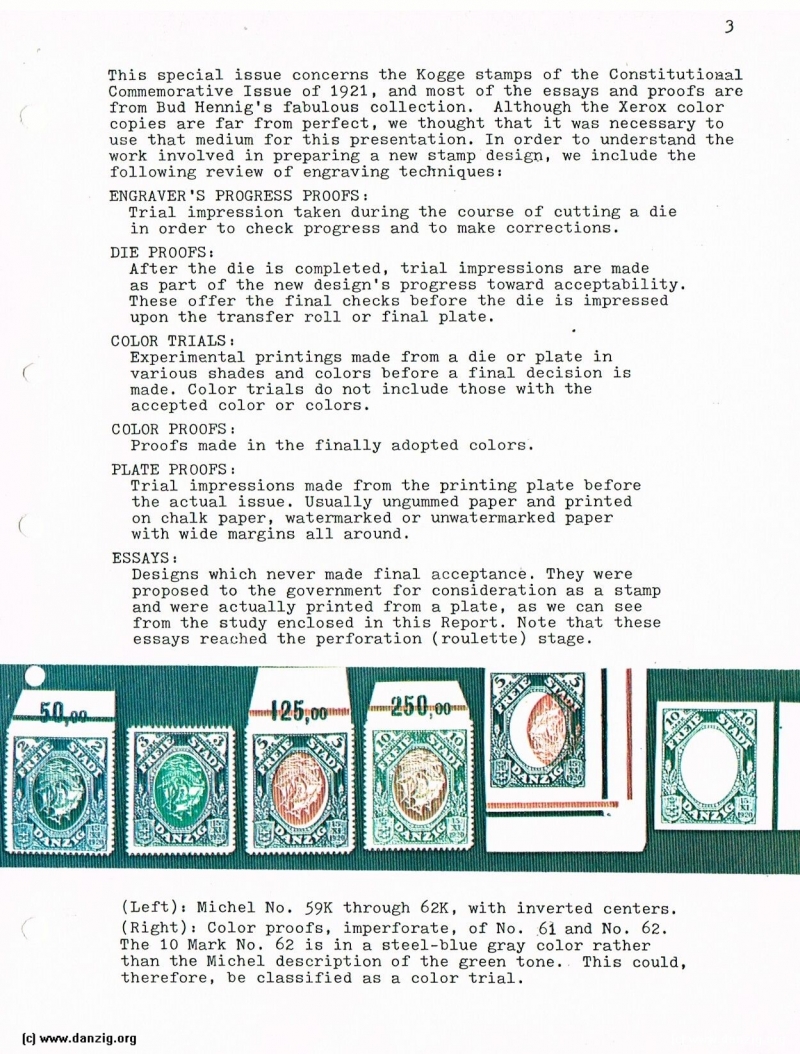
> The red and white Hanseatic Traders flag
This special issue concerns the Kogge stamps of the Constitutioaal Commemorative Issue of 1921, and most of the essays and proofs are from Bud Hennig’s fabulous collection. Although the Xerox color copies are far from perfect, we thought that it was necessary to use that medium for this presentation. In order to understand the work involved in preparing a new stamp design, we include the following review of engraving techniques:
ENGRAVER’S PROGRESS PROOFS:
Trial impression taken during the course of cutting a die in order to check progress and to make corrections.
DIE PROOFS:
After the die is completed, trial impressions are made as part of the new design’s progress toward acceptability. These offer the final checks before the die is impressed upon the transfer roll or final plate.
COLOR TRIALS: .
Experimental printings made from a die or plate in various shades and colors before a final decision is made. Color trials do not include those with the accepted color or colors.
COLOR PROOFS:
Proofs made in the finally adopted colors.
PLATE PROOFS:
Trial impressions made from the printing plate before the actual issue. Usually ungurnmed paper and printed on chalk paper, watermarked or unwatermarked paper with wide margins all around.
ESSAYS:
Designs which never made final acceptance. They were proposed to the government for consideration as a stamp and were actually printed from a plate, as we can see from the study enclosed in this Report. Note that these essays reached the perforation (roulette) stage.
(Left): Michel No. 59K through 62K, with inverted centers. (Right): Color proofs, imperforate, of No. 6 and No. 62. The 10 Mark No. 62 is in a steel-blue gray color rather than the Michel description of the green tone. This could, therefore, be classified as a color trial.
Danzig Report Nr. 42 - January - February - March - 1984, Page 4.
Hits: 3636
Added: 12/06/2015
Copyright: 2025 Danzig.org

